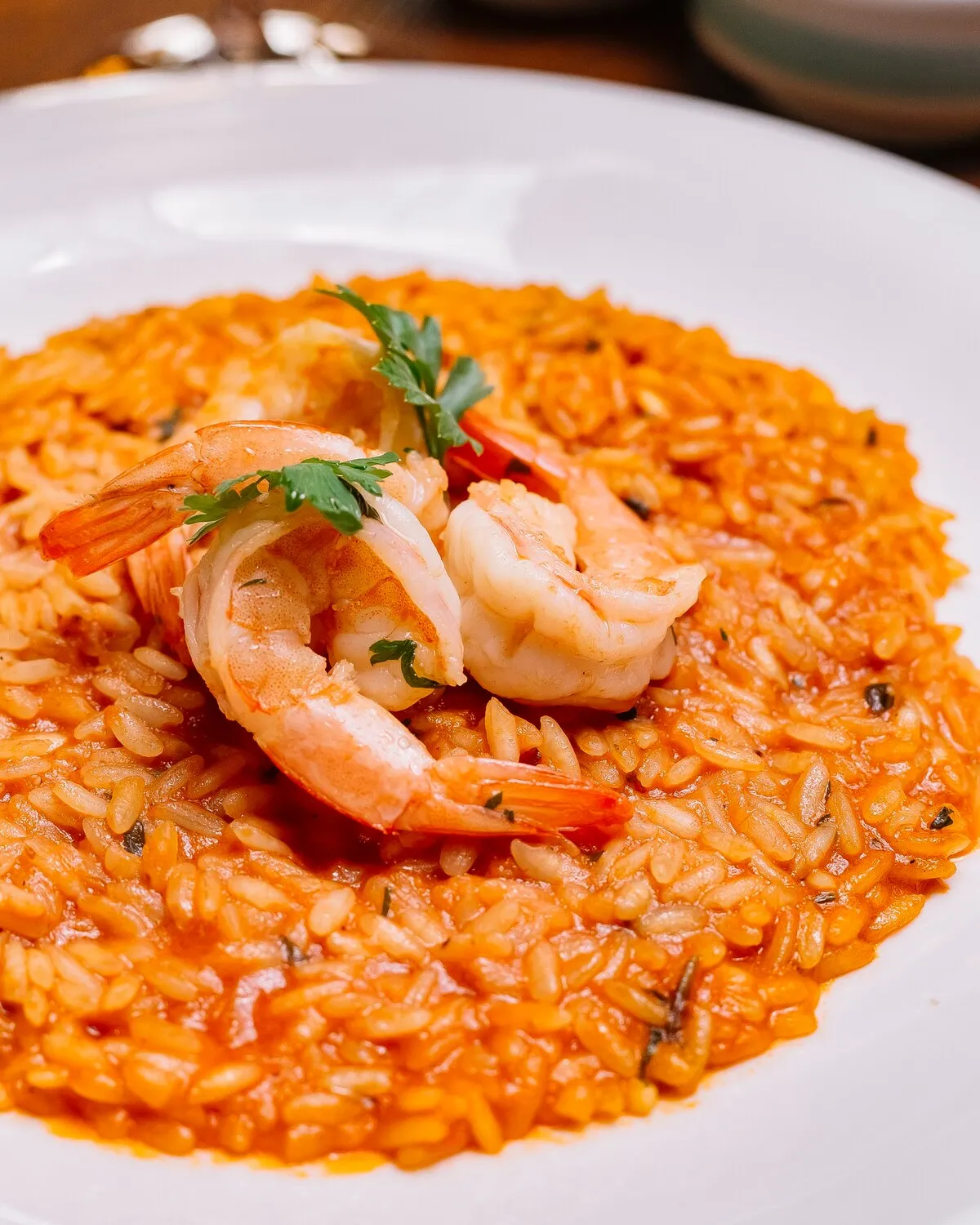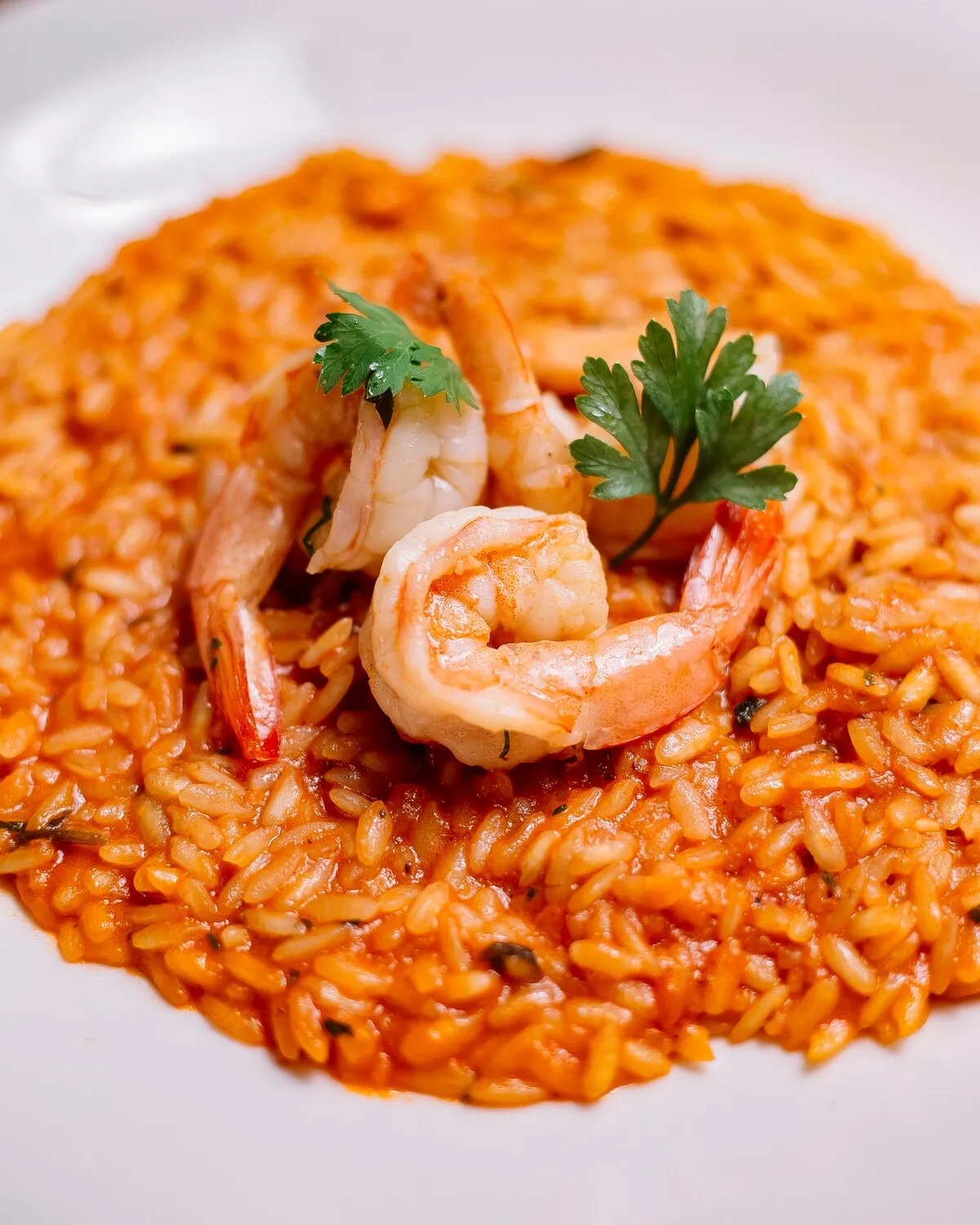
Risoto de Camarão
Shrimp risotto.
Nutrition Facts
* The % Daily Value (DV) tells you how much a nutrient in a serving of food contributes to a daily diet. 2,000 calories a day is used for general nutrition advice.
Restaurante Pastiera
Risotto, a creamy rice dish, has its roots in Northern Italy, particularly the Po Valley. The introduction of rice to Italy is attributed to the Arabs in the Middle Ages, and the dish evolved over centuries. The addition of seafood like shrimp reflects Italy's extensive coastline and access to fresh ingredients.
Risotto is often seen as a special occasion dish in Italy, demanding patience and attention to detail. Sharing a well-prepared risotto is a sign of hospitality and appreciation. The addition of shrimp elevates the dish, making it suitable for celebrations and gatherings.
Regional Variations
While the core elements of risotto remain consistent, regional variations exist. Some recipes might incorporate different types of seafood or vegetables, reflecting the local ingredients available.
Slow Food Movement
Risotto embodies the principles of the Slow Food movement, emphasizing the use of high-quality, locally sourced ingredients and the importance of taking time to prepare and savor the dish.
Culinary Heritage
Risotto represents a significant part of Italy's culinary heritage, showcasing the country's diverse agricultural landscape and its tradition of transforming simple ingredients into exquisite meals.
Risoto de Camarão is a harmonious blend of savory seafood, creamy rice, and aromatic herbs. The dish is characterized by its rich, comforting texture and delicate balance of flavors.
The primary flavor component is the sweet and briny taste of shrimp (camarão). This is complemented by the subtle starchiness of Arborio or Carnaroli rice, which creates the creamy texture. White wine adds acidity and depth, while Parmesan cheese contributes a salty, umami richness. Aromatic vegetables like onion and garlic provide a savory base, and herbs like parsley and chives offer a fresh, herbaceous counterpoint. Lemon zest or juice brightens the dish and balances the richness.
Rice Selection
Use Arborio or Carnaroli rice for the best results. These varieties have a high starch content and retain their shape during cooking, resulting in a creamy, al dente texture.
Broth Temperature
Always use hot broth when making risotto. Cold broth will lower the temperature of the rice and disrupt the cooking process.
Gentle Stirring
Stir the risotto frequently but gently. Over-stirring can make the rice mushy, while under-stirring can cause it to stick to the bottom of the pan.
Shrimp Preparation
Don't overcook the shrimp! Add them towards the end of the cooking process to ensure they remain tender and succulent. You can also sear them separately for a more intense flavor.
Explore additional Risotto dishes and restaurants
Explore RisottoDiscover top dining spots and culinary experiences in Cascavel.
Explore CascavelLearn more about the food culture, restaurant scene, and culinary heritage of Brazil.
Explore Brazil
